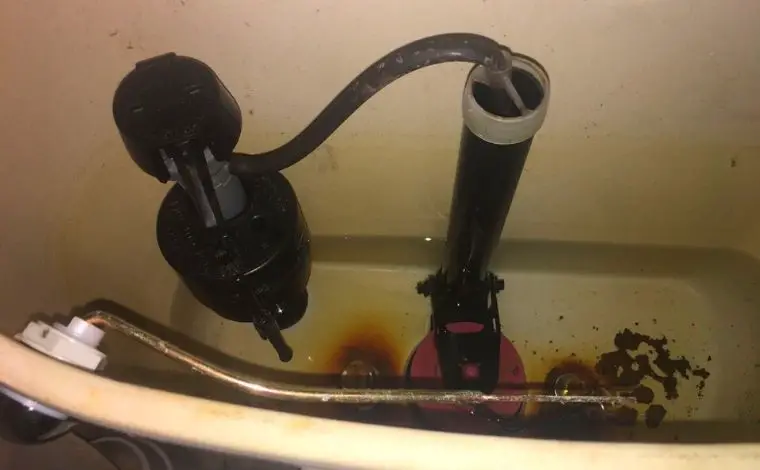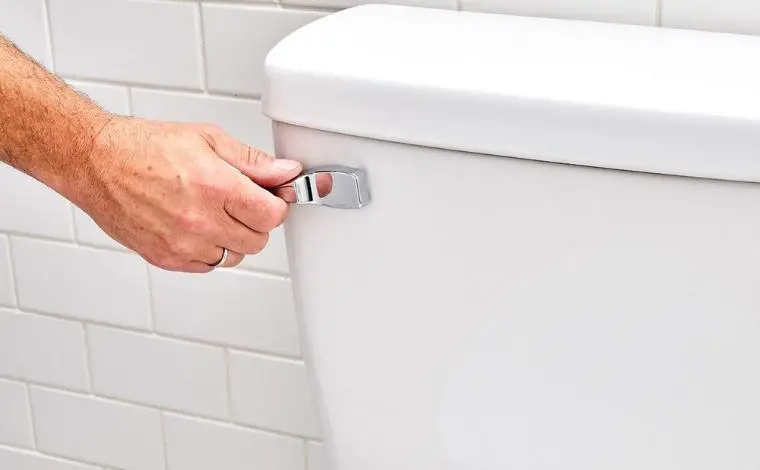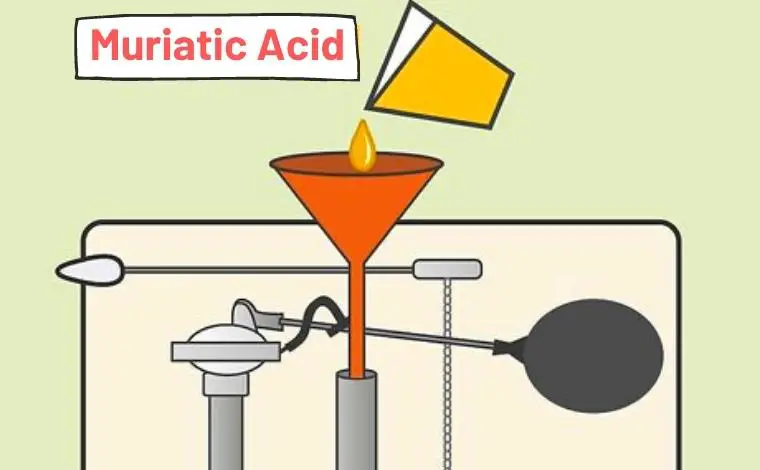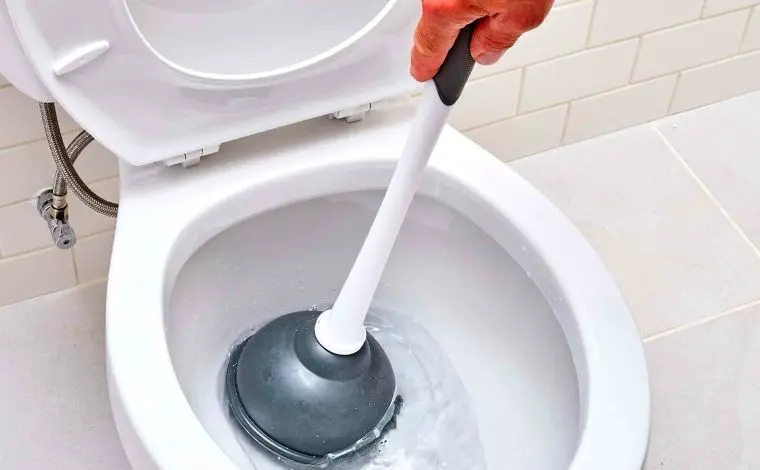A toilet is one of the most essential fixtures in every home, and when it doesn’t flush properly, it quickly turns into a frustrating problem. A weak or slow flush wastes time, causes unpleasant odors, and can even create embarrassing situations when waste is not cleared completely. For households with multiple members, this issue becomes even more inconvenient.
Many people try common toilet cleaners, plungers, or DIY tricks, but these methods don’t always solve the underlying problem. Mineral deposits, rust buildup, or stubborn clogs deep inside the pipes can make the flush weaker over time. This is where a stronger solution comes into play—muriatic acid.
Using muriatic acid is not the first option most homeowners think of, but it is one of the most powerful remedies for restoring a slow or weak flush. When used correctly, it dissolves tough mineral deposits and clears out blockages that ordinary cleaners cannot handle. In this complete guide, we’ll explore how a muriatic acid slow flushing toilet solution works, the possible causes of poor flushing, step-by-step usage instructions, and the safety precautions you must follow.
By the end of this article, you’ll have a clear understanding of whether muriatic acid is the right choice for fixing your slow flushing toilet and how to use it safely and effectively.
What Is Muriatic Acid and How Does It Work?
When dealing with a muriatic acid slow flushing toilet, it’s important to first understand what this substance is and why it works so effectively. Many people have heard the name but don’t fully know the difference between muriatic acid and regular household cleaners.
What Exactly Is Muriatic Acid?
Muriatic acid is essentially a diluted form of hydrochloric acid (HCl). While pure hydrochloric acid is used in laboratories and heavy industries, muriatic acid is slightly weaker, usually with a 30–32% concentration, compared to the 38% concentration found in stronger HCl solutions. Despite being less concentrated, it is still a very powerful chemical and must be handled with extreme care.
For centuries, muriatic acid has been used in various industries, including:
- Construction – for cleaning bricks, masonry, and concrete.
- Metalwork – for removing rust and scale from metals.
- Swimming pools – for adjusting water pH levels.
- Household cleaning – for dissolving stubborn mineral deposits and stains.
This same strength makes it a good option for fixing slow-flushing toilets, since it can break down deposits that block water flow inside the toilet bowl and pipes.
Muriatic Acid vs. Hydrochloric Acid
While both acids are chemically similar, they are not identical in use:
- Hydrochloric acid: Pure, stronger, mostly found in labs or industrial applications.
- Muriatic acid: Diluted, slightly impure, and more suitable for cleaning tasks around the home.
So, when you hear people talking about using hydrochloric acid in toilets, they often mean muriatic acid, which is easier to purchase from hardware or home improvement stores.
How Does Muriatic Acid Help a Slow Flushing Toilet?
A slow flush is often caused by mineral buildup, rust stains, or clogged rim holes that reduce water flow. Hard water contains calcium and magnesium, which leave behind limescale deposits inside the toilet’s siphon jet and rim jets. Over time, this buildup blocks the pathways where water should flow, making the flush weaker.
When you use muriatic acid:
- It dissolves calcium and lime deposits almost instantly.
- It removes rust stains that discolor the toilet and clog holes.
- It clears organic material stuck in the trap or pipes.
In short, muriatic acid restores the original water flow power, making your toilet flush as strongly as it should. That’s why it’s often considered a last-resort but highly effective solution for a muriatic acid slow flushing toilet problem.
Common Reasons for a Slow Flushing Toilet
Before you rush to fix a muriatic acid slow flushing toilet, it’s important to understand why your toilet may not be flushing properly in the first place. A weak flush doesn’t always mean you need strong chemicals—it could be caused by several mechanical, environmental, or maintenance-related issues. Identifying the exact problem will help you decide if muriatic acid is the right solution.
1. Blockages in the Toilet Tank
The toilet tank is the powerhouse of the flush. Inside, water is stored and then released into the bowl when you press the flush handle. Over time, debris, rust, or hard water deposits can build up around the flapper, chain, or flush valve. If these parts don’t open fully, the toilet won’t release enough water at once, leading to a weak flush.

A common sign of this issue is when you see the flapper rising only halfway or the lift chain getting stuck. Even a ½-inch slack in the chain can reduce the flushing force significantly.
2. Dirty Rim Holes and Toilet Bowl
Water flows from the tank into the bowl through small rim holes and a larger siphon jet. If these are blocked by mineral deposits, the water pressure decreases. You might notice water trickling slowly instead of gushing strongly during the flush. This is one of the main reasons homeowners turn to muriatic acid—it can quickly dissolve those stubborn deposits and reopen the rim jets.
3. Clogged Drain or Sewer Line
One of the most frustrating causes of a slow-flushing toilet is a partially clogged drainpipe. Toilet paper buildup, foreign objects, or even tree roots invading the sewer line can reduce water flow. In these cases, even if the tank and bowl are clean, the water struggles to pass through the drain, resulting in sluggish flushing.
4. Vent Pipe Blockage
Your toilet’s plumbing system has a vent pipe that allows air to escape when water flows through the pipes. If the vent pipe is clogged with leaves, dirt, or bird nests, it creates negative air pressure, slowing down the flush. Many homeowners overlook this issue because it’s not visible, but it can have the same effect as a partial clog in the drain line.
5. Low Water Levels in the Tank
Sometimes the cause is much simpler: not enough water in the tank. If the float valve is set too low or there’s a leak in the fill valve, the toilet won’t store enough water for a powerful flush. Adjusting the float or repairing the valve can fix this issue without needing any chemicals.
When Should You Consider Muriatic Acid?
If the problem is mainly due to mineral buildup, rust, or hard water deposits inside the toilet bowl, rim jets, or siphon jet, then muriatic acid is an excellent choice. However, if the issue lies in the sewer line, vent pipe, or mechanical tank parts, muriatic acid won’t solve the problem—you’ll need physical cleaning, repairs, or even a plumber.
Understanding these causes will help you use muriatic acid effectively and only when it’s the right solution for a muriatic acid slow flushing toilet problem.
Is It Safe to Use Muriatic Acid in the Toilet?
When homeowners first hear about using acid to clean a toilet, their immediate reaction is usually concern. After all, muriatic acid is a strong and corrosive chemical. So the big question is: Is it safe to use muriatic acid in the toilet? The short answer is yes, but only if you follow strict safety precautions. Let’s explore both the benefits and the risks.
The Benefits of Muriatic Acid in Toilets
Muriatic acid is often considered a “last resort” cleaner because of its strength. Compared to ordinary toilet cleaners, it works faster and more effectively in specific situations:
- Removes stubborn mineral deposits – Hard water often leaves behind calcium and lime buildup that regular cleaners can’t dissolve.
- Unclogs blocked rim jets and siphon holes – Restoring water pressure for a strong flush.
- Eliminates rust stains – Particularly common in older homes with iron pipes or well water.
- Breaks down organic material – Helping restore the toilet’s flow without needing expensive plumbing work.
This makes it an excellent solution for fixing a muriatic acid slow flushing toilet problem when nothing else seems to work.
The Risks of Muriatic Acid
Despite its effectiveness, muriatic acid is not without dangers. Misusing it can lead to serious health risks and even damage your plumbing:
- Health hazards – Muriatic acid fumes can irritate your eyes, throat, and lungs. Skin contact can cause burns, and even a small splash in the eyes can lead to permanent damage.
- Plumbing risks – Prolonged or repeated use can corrode metal pipes and damage porcelain if left sitting too long.
- Septic system impact – If you have a septic tank, muriatic acid can kill beneficial bacteria that break down waste. This may reduce the efficiency of your septic system.
- Toxic reactions – Never mix muriatic acid with bleach, ammonia, or other cleaners. The combination can produce deadly chlorine gas.
Safety Guidelines for Using Muriatic Acid
To minimize risks, always follow these safety rules when using it in your toilet:
- Wear protection – Use rubber gloves, safety goggles, and a face mask.
- Ensure ventilation – Keep windows open and fans running to reduce fumes.
- Dilute properly – Mix the acid with water in the right ratio (typically 1 part acid to 10 parts water). Always add acid to water, not the other way around.
- Limit exposure time – Do not let muriatic acid sit in the toilet bowl for more than 10–15 minutes.
- Flush thoroughly afterward – Rinse the toilet multiple times to wash away residue and protect your plumbing.
When handled responsibly, the benefits of muriatic acid far outweigh the risks. It can quickly transform a sluggish flush into a powerful one, making your toilet function like new. But without proper precautions, a muriatic acid slow flushing toilet solution can turn into a dangerous situation.
Step-by-Step Guide – How to Use Muriatic Acid for a Slow Flushing Toilet
If you’ve confirmed that mineral buildup or rust deposits are the reason behind your toilet’s weak flush, muriatic acid can be an effective solution. However, you need to handle it carefully and follow a systematic process. Below is a complete, safe method for fixing a muriatic acid slow flushing toilet.
Step 1: Prepare the Toilet

- Flush the toilet once to reduce the water level in the bowl.
- If possible, shut off the water supply and use a small cup or sponge to remove excess water from the bowl.
- The goal is to keep the bowl as empty as possible so the acid can directly contact the mineral deposits.
 Step 2: Protect Yourself First
Step 2: Protect Yourself First
Muriatic acid is hazardous. Always wear thick rubber gloves, safety goggles, and a face mask before starting. Make sure your bathroom has good airflow by opening windows or running an exhaust fan.
Step 3: Dilute the Acid Properly
- In a plastic container, mix 1 part muriatic acid with 10 parts water.
- Always remember: add acid to water, never water to acid. This prevents dangerous splashing.
- Prepare only the amount you need (usually about 1 cup of acid diluted with 10 cups of water is enough for one toilet).

Step 4: Pour the Solution into the Toilet
- Use a plastic funnel to guide the mixture into the toilet bowl.
- Carefully pour around the rim area so the solution flows into the small rim jets and the siphon jet.
- Avoid splashing to protect your skin and eyes.
Step 5: Let It Work
- Allow the acid solution to sit in the bowl for 10–15 minutes.
- During this time, it will dissolve lime, calcium, rust, and any blockages restricting water flow.
- Do not leave it for longer, as prolonged exposure can damage porcelain or corrode pipes.
Step 6: Flush the Toilet Thoroughly
- Turn the water supply back on if you shut it off.
- Flush the toilet two or three times to wash away the acid and loosened deposits.
- For extra safety, add a cup of baking soda to the bowl before the final flush—this neutralizes any remaining acid.
Step 7: Maintain for Long-Term Results
- You don’t need to use muriatic acid weekly. Instead, rely on gentler cleaners like vinegar, baking soda, or mild toilet cleaning products for regular maintenance.
- Use muriatic acid only when your toilet shows signs of slow flushing due to buildup.
Final Thoughts – Should You Use Muriatic Acid Regularly?
Using muriatic acid can feel intimidating at first, but when applied correctly, it is one of the most powerful solutions for fixing a muriatic acid slow flushing toilet. Its ability to dissolve mineral deposits, clear rust stains, and restore water flow makes it far more effective than most commercial toilet cleaners. However, like any strong chemical, it should be used with respect and caution.
When to Use Muriatic Acid
- If your toilet flushes weakly because of hard water deposits or clogged rim jets.
- When rust stains or mineral buildup won’t respond to standard cleaners.
- As a last-resort solution before calling a plumber.
When NOT to Use Muriatic Acid
- If the problem is caused by a blocked sewer line, vent pipe, or damaged tank parts. In these cases, mechanical repairs or professional help are required.
- If you have a septic tank system, use muriatic acid sparingly because it can disrupt the balance of beneficial bacteria.
- For routine cleaning—gentler solutions like vinegar, baking soda, or mild toilet cleaners are safer for weekly use.
The Long-Term Approach
Relying on muriatic acid regularly isn’t necessary and may shorten the lifespan of your plumbing if overused. Instead, adopt a preventive maintenance routine:
- Clean your toilet bowl weekly with mild cleaners.
- Check the water level in the tank monthly to ensure a strong flush.
- Inspect rim holes and the siphon jet for mineral deposits every few months.
- If you live in a hard-water area, consider installing a water softener to reduce mineral buildup.
The Bottom Line
Muriatic acid can save you time, money, and frustration by restoring a sluggish flush back to full strength. With the right precautions—protective gear, proper dilution, and careful handling—it’s safe to use occasionally as a powerful cleaning tool.
So, if you’re dealing with a muriatic acid slow flushing toilet, don’t panic. With the step-by-step process explained in this guide, you can bring your toilet back to peak performance, avoid costly plumber visits, and enjoy a clean, efficient bathroom once again.
Hi, this is Robert Crossan, the owner of this website, has 17 years of experience in the installation, maintenance, and repair of toilets and plumbing systems. After completing the Level 2 Basic Plumbing course in 2005, I started working in both domestic and commercial buildings as a professional plumber. So I can figure out the core difference between different toilet models and brands. It also helped me monitor their work performance and setbacks.
